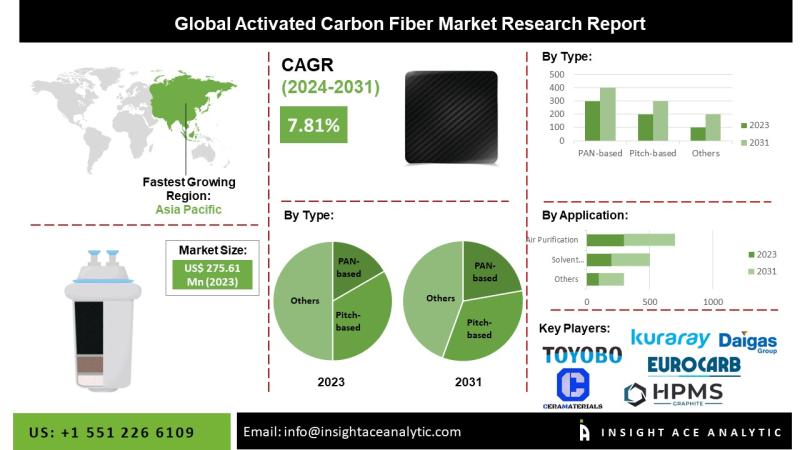Activated Carbon Fiber Market Analysis
The global activated carbon fiber market is projected to reach over $500.04 million by 2031, exhibiting a compound annual growth rate (CAGR) of 7.81% during the forecast period. Activated carbon fiber (ACF) is renowned for its low microporosity and high specific surface area, enabling efficient adsorption while minimizing pressure loss and carbon dust generation during the filtration of hazardous substances.
Key Characteristics and Applications
ACF demonstrates superior mechanical properties, including high stiffness, tensile strength, compact packing ability, and substantial volumetric capacity. These characteristics make ACF highly suitable for various applications such as water filtration, surface treatment, liquid purification, and the removal of contaminants from polluted gaseous streams. The industry is experiencing significant growth driven by accelerated industrialization and the increasing demand for clean water across residential and commercial sectors.

Market Dynamics
Drivers
The growing global emphasis on wastewater management, driven by the rising demand for freshwater amid limited supply, is fostering widespread adoption of advanced treatment technologies. Rapid industrialization and urbanization in developing regions have led to substantial discharge of wastewater containing hazardous chemicals, adversely impacting the environment. This trend is expected to create significant growth opportunities within the activated carbon fiber market over the forecast period.
Challenges
Despite its advantages, gas-phase activated carbon remains costlier than liquid-phase alternatives, limiting its widespread application in gaseous environments. The scarcity of key raw materials, such as coconut shell charcoal, has resulted in increased production costs. Price volatility of raw materials contributes to the high overall cost of activated carbon fiber products, which may constrain market demand.
Regional Trends
The Asia-Pacific region is experiencing the fastest growth in the activated carbon fiber market globally. This expansion is primarily driven by robust demand from chemical manufacturing, air purification, and other key end-use industries. Moreover, the region’s growing focus on water treatment applications continues to be a critical factor supporting market growth in Asia-Pacific.
Recent Developments
In June 2020, Kuraray Co., Ltd. announced that its American subsidiary, Calgon Carbon Corporation, had decided to increase production capacity at its Pearl River Plant in Mississippi, USA, in response to the rising demand for activated carbon on a global scale.
Market Segmentation
The activated carbon fiber market is segmented by type, application, and region. By type, it includes PAN-based, pitch-based, cellulosic fiber, phenolic resin, and others. By application, it encompasses solvent recovery, air purification, water treatment, catalyst carrier, and others.
Conclusion
The activated carbon fiber market is poised for significant growth driven by increasing demand for clean water and stringent environmental regulations. While challenges such as high production costs exist, ongoing research into alternative carbon production methods is expected to reduce costs and offer prospects for market stabilization and expansion during the forecast period.


